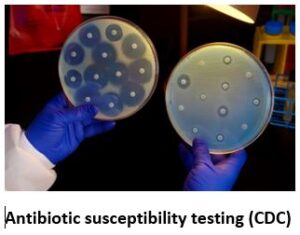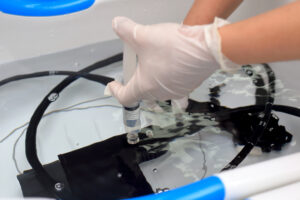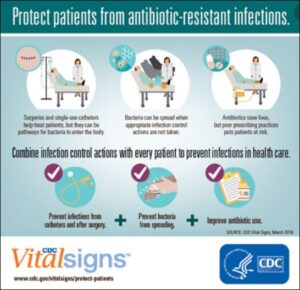February 10, 2023 (by: Lawrence F Muscarella, PhD; updated: February 8, 2024): Just weeks ago, FDA received a report — publicized now for the first time — linking a facility’s two gastroscopes to rare, resistant infections.
Highlights
- An FDA adverse event report filed in November (2022) — publicized now for the first time — linking two gastroscopes to three patients testing positive for a “rare strain” of resistant E. coli. Apparently all three patients died.
- Cases linking gastroscopes to transmission specifically of E. coli are not commonly reported.
- Another FDA report filed the previous year, in 2021, also publicized now for the first time, linked a gastroscope to six patients with the same strain of resistant Pseudomonas aeruginosa. Three of the six patients died, according to the report.
- A recent analysis by Muscarella (2022) found that the total number of adverse event reports submitted to FDA between 2014 and 2021 describing endoscope contamination was greater for gastroscopes than for any of the other studied endoscope types, which included bronchoscopes and duodenoscopes.
- Nevertheless, federal safety alerts notifying healthcare providers about the risk of “reprocessed” gastroscopes remaining persistently contaminated and exposing patients to multidrug-resistant organisms (MDROs) have not been published.
- The mortality rates of patients infected with a MDRO can be as high as 50%, or higher.
- This article raises questions about whether the risk of gastroscope-related “superbug” infections is sufficiently recognized in the U.S., and whether additional updated measures may be necessary to enhance gastroscope safety.
- Publication of federal safety notices featuring updated guidance to raise awareness among healthcare providers and reduce the risk of reprocessed gastroscopes remaining contaminated and exposing patients to resistant E. coli (and other MDROs) – similar in advice, emphasis, rationale and actions as FDA’s previously issued notifications publicizing the risk of reprocessed bronchoscopes, duodenoscopes and urological endoscopes infecting patients — is recommended for consideration.
February 10, 2023 (by: Lawrence F Muscarella, PhD; updated: February 8, 2024): Just weeks ago, FDA received a report — publicized now for the first time — linking a facility’s two gastroscopes to rare, resistant infections.
According to the federal report,* three patients who underwent esophagogastroduodenoscopy (or, EGD) using one of two different gastroscopes tested positive for “a rate (sic) strain” of antibiotic-resistant E. coli — and apparently all three of the patients died.**
 FDA received this report from the gastroscope’s manufacturer on November 22, 2022. The agency also received several other adverse event reports on this same day apparently describing this same cluster of infections.
FDA received this report from the gastroscope’s manufacturer on November 22, 2022. The agency also received several other adverse event reports on this same day apparently describing this same cluster of infections.
These FDA reports clarify, however, that the medical facility is “unsure” if the gastroscopes cross-infected the patients with the E. coli. The facility is not identified by name, although the report states that the facility is in the U.S.
Some of the FDA’s other November reports — one of which was submitted for patient 1 (a 59-year old male), one for patient 2 (a 79-year old female), and one for patient 3 (a 59-year old female) — state “deceased” as the “current condition,” or outcome, of each of the three infected patient.
The facility sampled the two gastroscopes and according to the reports, the culture results for both were negative for this rare strain of resistant E. coli bacteria. The November FDA reports identify the implicated gastroscopes as the GIF-1TH190 and GIF-H190 models.
Resistant strains of E. coli can be carbapenem-resistant Enterobacteriaceae, also called CRE, whose association the past decade with deadly endoscope-related outbreaks is well documented. The mortality rates of patients infected with this “superbug” or a related multidrug-resistant organism can be as high as 50%, or higher.
While none of the reports address the adequacy of the facility’s reprocessing of the gastroscopes, an FDA report submitted weeks later, in January (2023), appearing to describe this same E. coli cluster, stated that examination of one of the gastroscopes returned to the manufacturer for evaluation detected “fluid leakage from the biopsy channel” (along with a few other noted concerns requiring repair).
Endoscope damage is a risk factor for persistent contamination of the device, biofilm growth, and an increased risk of infection.
Cases linking gastroscopes to transmission specifically of E. coli are not commonly reported, and none were identified in reviews by McCafferty et al. (2018), Kovaleva et al. (2013), Muscarella (2014) and Nelson and Muscarella (2006). In contrast to gastroscopes, reports have linked duodenoscopes to infections of E. coli.
EGD is an upper GI procedure that routinely uses a gastroscope to diagnose and treat diseases and disorders of the upper GI tract’s esophagus, stomach and duodenum. Some gastroscope models may feature a ultrasound transducer for imaging deeper tissues.
 Forensic Case Reviews; Infection Prevention Guidance; and Root Cause Analyses: LFM-Healthcare Solutions, LLC provides healthcare facilities, manufacturers and legal represenatives with expert guidance and advice for identifying the causes and prevention of healthcare-associated infections linked to contaminated reusable medical equipment.
Forensic Case Reviews; Infection Prevention Guidance; and Root Cause Analyses: LFM-Healthcare Solutions, LLC provides healthcare facilities, manufacturers and legal represenatives with expert guidance and advice for identifying the causes and prevention of healthcare-associated infections linked to contaminated reusable medical equipment.
A gastroscope-related cluster of resistant P. aeruginosa
While cases linking gastroscopes to infections of antibiotic-resistant E. coli are not commonly reported, gastroscope-related outbreaks of other types of resistant bacteria have been documented.
FDA received a report in July 2021 describing a U.S. facility that, with assistance from the state’s health department, had identified six gastroenterology patients “with the same strain of carbapenemase-producing Pseudomonas aeruginosa (CPPA) during a six-month period.”
According to the FDA’s report, each of the six patients underwent procedures using the same gastrointestinal videoscope. This implicated gastroscope was cultured, though the cultures were negative for the P. aeruginosa, the report stated.
This type of resistant Pseudomonas (CPPA) is not CRE per se, but rather a related MDRO. (Pseudomonas is not in the Enterobacteriaceae family and therefore cannot technically be CRE.)
The 2021 FDA report describing these six cases of carbapenemase-producing P. aeruginosa added that no breaches in the facility’s “standard high-level disinfection processes” had been identified, and that the “definitive cause of the user’s experience cannot be determined at this time.”
At least five of these patients underwent EGD using the gastroscope, which did not malfunction during the procedures, according to the FDA reports. Six reports, in total, were submitted to the FDA (in July 2021), one for each patient. The reports do not identify the U.S. facility by name.
According to three of the FDA reports (unpublished spreadsheet data available upon request), three of the P. aeruginosa cluster’s patients are reportedly “deceased,” although the reports stated that the respective patient’s cause of death “is not known to be associated with the device at this time.”
Endoscope reprocessing is a multi-step process that includes cleaning, high-level disinfection or sterilization, and proper storage. When the process is ineffective, the flexible endoscope can remain contaminated and pose a cross-infection risk.
A third case involving resistant K. pneumoniae
A third case published five years earlier, in 2016, described a cluster of carbapenem-resistant Klebsiella pneumoniae cases among surgical intensive care unit patients at a medical center in western Pennsylvania. A preliminary review found that all six cases of the CRE had been exposed to the same gastroscope.
No deficiencies in the gastroscope’s reprocessing were identified, according to the 2016 abstract that first disclosed this Pennsylvania facility’s cluster. CRE are MDROs — or “superbugs” — that are not susceptible to carbapenem antibiotics, which can cause the treatment of CRE infections often to be challenging and to require “last resort” antibiotics.
Like E. coli and P. aeruginosa, K. pneumoniae may be found in the human GI tract and can contaminate an endoscope during routine use, posing a risk of cross-infection if the endoscope is not reprocessed properly after each use.
This 2016 abstract emphasized that not only duodenoscopes — which have been under scrutiny from the FDA since 2015 due to their documented associations with superbug outbreaks — but also less physically complex endoscopes, like gastroscopes, “may fail high level disinfection and cause infections.”
Duodenoscopes are a type of upper GI endoscope used to perform endoscopic retrograde cholangiopancreatography, or ERCP — a medical procedure used to examine and treat disorders of the bile and pancreatic ducts.
Further, cultures of the implicated gastroscope were negative for the CRE, this 2016 abstract noted. Nevertheless, the abstract clarifies that failure to recover an infection’s organism from an implicated endoscope “should not preclude” the device “from suspicion.” Others have similarly, and critically, published that “an endoscope with a culture-negative result is not necessarily free of bacteria.”

A search of the FDA’s “MAUDE” database found a 2016 report that appears to describe this CRE cluster in western Pennsylvania. The clinical outcome of the six CRE cases was not discussed in this FDA report or the 2016 abstract.
This 2016 FDA report stated that “improper maintenance of the device cannot be ruled out as a contributory factor to the reported events.”* According to the 2016 abstract, visual examination of the gastroscope’s internal channel using a borescope “revealed several deep scratches and luminal debris.”
Patients testing positive for an organism are infected or colonized with the strain. Colonization indicates only the presence of the organism, whereas infection additionally requires the patient display symptoms of sickness.
Disposable flexible endoscopes, which offer an alternative to reusable flexible endoscopes, are not reprocessed but are discarded after a single use.
The FDA’s MAUDE database houses medical device reports submitted to FDA primarily by manufacturers and healthcare facilities but also by healthcare professionals and even patients and consumers.* These FDA reports are submitted voluntarily (e.g., by patients) or as mandated by law (e.g., by manufacturers).
A gastroscope-related Candida auris case
A review of the FDA’s adverse events database identified three more recent FDA reports linking a gastroscope to patient infections.*
One of these reports, publicized now for the first time, associates the use of a flexible endoscope — specifically, a gastroscope — to a patient with Candida auris.** This report may be the first case, ever, in the FDA’s medical device database (as well as the medical literature) to link a flexible endoscope to a case involving this drug-resistant fungus.
According to this report, “six days after an upper GI endoscopy with peg-tube placement (for nutritional support)” using a gastrointestinal videoscope, “Candida auris was identified in the patient’s blood culture.”
FDA received this report on December 9, 2022. The report does not identify the U.S. facility where this incident occurred.
Candida auris is an emerging multidrug-resistant fungus that presents a global health threat. The mortality rate of patients infected with C. auris can exceed 30%.
These cases, along with other findings and data I have reviewed, raise important questions for me about whether the risk of a reprocessed gastroscope exposing patients to multidrug-resistant organisms has received the attention it warrants. — Lawrence F. Muscarella Ph.D.
Risk factors for C. auris infection include longer stays in healthcare facilities and use of tracheostomies and percutaneous endoscopic gastrostomy tubes. Patient exposure to an endoscope has not been identified as a risk factor for C. auris infection.
More gastroscope-related outbreaks
In addition to this C. auris case, two other FDA reports, also filed in December 2022, describe an association between gastroscopes and two unrelated outbreaks (both seemingly occurring overseas).
 The first case links a contaminated gastroscope to an outbreak of four (4) multidrug-resistant Klebsiella pneumoniae infections. According to the report, the bacteria was detected in the gastroscope’s water channel.
The first case links a contaminated gastroscope to an outbreak of four (4) multidrug-resistant Klebsiella pneumoniae infections. According to the report, the bacteria was detected in the gastroscope’s water channel.
Similar to other cases, the report states that the “exact cause of the reported event cannot be conclusively determined” and that the investigation is still ongoing.
This cluster’s strain of the K. pneumoniae carried the blaOXA-181 gene, which encodes the production of the emerging carbapenem-hydrolyzing oxacillinase enzyme (i.e., OXA-181-producing K. pneumoniae).
The second case links an outbreak of extended spectrum β-lactamase-resistant bacteria (the genus is not identified) to patients exposed to a gastrointestinal videoscope (i.e., a gastroscope). It is not known at this time if this outbreak (which apparently occurred in Japan) is related to the gastroscope, the report states.
Extended spectrum β-lactamases, or ESBLs, are enzymes, produced by certain types of bacteria, that can break down and confer resistant to many commonly used β-lactam antibiotics, such as penicillins and cephalosporins. However, ESBL-producing bacteria are generally not resistant to carbapenems.
These two cases, among others, linking gastroscope exposure to multidrug-resistant infections raise reasonable questions about whether the risk of a reprocessed gastroscope remaining contaminated and exposing patients to a MDRO is sufficiently recognized today, and whether additional updated measures may be necessary to improve awareness and enhance gastroscope safety.
As many as 6 million procedures are performed annually in the U.S. using a gastroscope.
Related postings
Related publications by this article’s author addressing the risk of gastroscopes exposing patients to MDROs include:
- “Gastroscopes Now Linked to ‘Superbug’ Infections, Too” (December 2016)
- “Assessment of the Effectiveness of Today’s Endoscope Reprocessing Practices: An Abstract” (September 2022)
- “Contamination of Flexible Endoscopes and Associated Infections” (January 2022)
- “New Guidance to Prevent Other Types of Flexible Endoscopes From Transmitting Superbugs” (March 2018)
 Forensic Case Reviews, Adverse Events Reports, Causes of Hospital Infections: LFM-Healthcare Solutions, LLC provides medical guidance and expertise for legal representatives, healthcare facilities, and manufacturers, among other industries, with a focus on identifying the causes and prevention of healthcare-associated infections.
Forensic Case Reviews, Adverse Events Reports, Causes of Hospital Infections: LFM-Healthcare Solutions, LLC provides medical guidance and expertise for legal representatives, healthcare facilities, and manufacturers, among other industries, with a focus on identifying the causes and prevention of healthcare-associated infections.
A “most pronounced” increase
A recent analysis by Muscarella (2022) focused on medical device reports submitted to FDA since 2014 describing the actual or potential contamination of several types of flexible endoscopes after reprocessing.
Among other results, this analysis found that the number of FDA reports in 2021 satisfying the study’s inclusion criteria, compared to seven years earlier in 2014, increased significantly for each of the six studied endoscope types — with gastroscopes displaying the most pronounced increase.
This analysis’s manual review of more than 10,000 adverse event reports also found that the total number of relevant adverse event reports submitted to FDA between 2014 and 2021 was greatest for gastroscopes.
I manually reviewed more than 10,000 adverse event reports, even as many as 15,000, involving potential contamination, and I found that the total number of reports, submitted to FDA between 2014 and 2021, satisfying my study’s requirements was greatest, not for duodenoscopes, but for gastroscopes. — Lawrence F Muscarella, PhD
The other types of flexible endoscopes included in Muscarella’s (2022) analysis were bronchoscopes, colonoscopes, duodenoscopes, ear-nose-throat (ENT) endoscopes, and urological endoscopes. Each endoscope included in this analysis was reusable.
 Despite Muscarella’s (2022) findings along with other published data and cases involving contamination of reprocessed gastroscopes — with some of the reports linking a reprocessed gastroscope to infections (or colonizations) of CRE or a related MDRO, and in at least one recent case to associated patient death** — federal alerts specifically addressing this risk have not been recently issued.
Despite Muscarella’s (2022) findings along with other published data and cases involving contamination of reprocessed gastroscopes — with some of the reports linking a reprocessed gastroscope to infections (or colonizations) of CRE or a related MDRO, and in at least one recent case to associated patient death** — federal alerts specifically addressing this risk have not been recently issued.
These findings, in addition to other published data, again raise reasonable questions about whether the risk of a reprocessed gastroscope remaining contaminated and exposing patients to a MDRO is sufficiently recognized today, and whether additional updated measures may be necessary to improve awareness and enhance gastroscope safety.
Related peer-reviewed articles
Related peer-reviewed publications by this article’s author addressing the risk of bronchoscopes and duodenoscopes infecting patients with MDROs include:
- “Bronchoscope-Related ‘Superbug’ Infections” (Chest 2020 Feb;157(2):454-469).
- “Use of ethylene-oxide gas sterilisation to terminate multidrug-resistant bacterial outbreaks linked to duodenoscopes” (BMJ Open Gastro 2019;6:e000282).
- “Risk of transmission of carbapenem-resistant Enterobacteriaceae and related “superbugs” during gastrointestinal endoscopy” (World J Gastrointest Endosc 2014 Oct 16; 6(10): 457–474).
Risk factors for gastroscope contamination
The November FDA reports linking the use of two gastroscopes to infections of a rare strain of antibiotic-resistant E. coli provide few details about what infection-control lapses might have contributed to the infections, although damage to one of the gastroscopes (i.e., “fluid leakage from the biopsy channel“) was reported.
In general, however, several factors can increase the risk of a reprocessed endoscope exposing patients to bacteria including CRE and related MDROs, in addition to endoscope damage, which can facilitate persistent contamination and biofilm growth. These factors include:
- faulty manual cleaning (and brushing) of the endoscope
- inadequate high-level disinfection of the endoscope
- the endoscope design’s physical complexity, which can hinder access and cleaning
- incomplete or invalid endoscope reprocessing instructions
- a defective endoscope component (e.g., a loosened component, a gap in an adhesive)
- improper endoscope maintenance or servicing (e.g., repairing the endoscope using unqualified or non-certified parts)
- inadvertent use of contaminated water to rinse the endoscope following disinfection or chemical immersion
- mishandling the endoscope during reprocessing
- not properly storing the reprocessed endoscope consistent with the manufacturer’s instructions
The extent to which any of these factors might have contributed to this these three infections of the rare resistant E. coli strain remains unclear.** According to the FDA’s November (2022) reports, the “definitive cause” of this incident “cannot be determined at this time. The investigation is ongoing.”
To enhance endoscope safety, FDA recommends sterilization (after thorough cleaning) of the endoscope when practical and feasible, because sterilization has a greater safety margin (compared to high-level disinfection), according to FDA.
 Forensic Case Reviews, “Gap Analyses,” Causes of Hospital Infections: LFM-Healthcare Solutions, LLC provides medical expertise for legal representatives, healthcare facilities, and manufacturers with a focus on identifying the causes and prevention of healthcare-associated infections.
Forensic Case Reviews, “Gap Analyses,” Causes of Hospital Infections: LFM-Healthcare Solutions, LLC provides medical expertise for legal representatives, healthcare facilities, and manufacturers with a focus on identifying the causes and prevention of healthcare-associated infections.
Recommendations
Several recommendations are provided to improve the safety of gastroscopes. These include reviewing the device manufacturer’s reprocessing instructions; confirming that the endoscopy unit’s policies and procedures are consistent with these instructions; and monitoring reprocessing practices to ensure compliance with these policies and procedures.
Additional reprocessing steps may be required if the gastroscope features an ultrasound transducer and elevator mechanism (similar in design to the duodenoscope’s forceps lever). Refer to the gastroscope model’s reprocessing manual for detailed instructions.
Enhanced measures, similar to the “supplemental measures” FDA published in 2015 for healthcare facilities to consider to improve the safety of duodenoscopes, may be considered for gastroscopes when feasible and deemed warranted (e.g., in response to the individual facility’s assessment of the risk of MDRO infections).
I recommend that federal agencies consider issuing a notice or letter featuring updated guidance to raise awareness, enhance safety, and further reduce the risk of a reprocessed gastroscope remaining contaminated and exposing patients to MDROs, such as CRE and possibly even C. auris. — Lawrence F Muscarella, PhD
In addition, publication of federal safety notices featuring updated guidance to raise awareness among healthcare providers and further reduce the risk of gastroscope-related infections – similar in advice, emphasis, rationale and actions as FDA’s previously issued notifications publicizing the risk of infections associated with reprocessed bronchoscopes, duodenoscopes and urological endoscopes — is recommended for consideration.
Other recommendations FDA has previously published for some of these other types of flexible endoscopes (based in part on feasibility and the individual facility’s assessment of the infection risk), but which can be reasonably applied also to gastroscopes to further improve safety include:
- to consider using sterilization when feasible
- to consider using single-use endoscopes (when available and feasible) (e.g., when the risk of transmitting MDROs is increased), or when the immediate reprocessing of the endoscope is not supported
- visually inspect the endoscope for defects or other irregularities prior to use
- do not use damaged endoscopes or those that have failed a leak test, as use of a damaged endoscope can increase the risk of cross-infection
- handle and store the processed endoscope according to the manufacturer’s instructions
- similarly, adhere to the manufacturer’s recommendations for preventive maintenance and repair of the endoscope
Additional updated guidance to improve endoscope safety is provided in a related article entitled, “Contamination of Flexible Endoscopes and Associated Infections: A Comprehensive Review and Analysis of FDA Adverse Event Reports.”
Summary, Conclusions
The safe use of gastroscopes is crucial to public health. As many as 6 million endoscopic procedures using a gastroscope are performed annually in the U.S.
FDA reports filed in November (2022) — publicized now for the first time — link two gastroscopes to three patients testing positive for a rare strain of antibiotic-resistant E. coli bacteria.*
Cases linking gastroscopes to transmission specifically of E. coli are not commonly reported,
 In addition, Muscarella (2022) found that the total number of relevant adverse event reports submitted to FDA, between 2014 and 2021, involving endoscope contamination was greatest for gastroscopes.
In addition, Muscarella (2022) found that the total number of relevant adverse event reports submitted to FDA, between 2014 and 2021, involving endoscope contamination was greatest for gastroscopes.
Despite these data and other cases, federal safety notices advising healthcare providers about the risk of reprocessed gastroscopes remaining contaminated and exposing patients to MDROs, including CRE, have not been recently issued.
The mortality rates of patients infected with CRE or a MDRO can be as high as 50%, or higher.
The findings presented herein raise reasonable questions about whether the risk of a reprocessed gastroscope remaining contaminated and exposing patients to a MDRO is sufficiently recognized today, and whether additional updated measures may be necessary to improve awareness and enhance gastroscope safety.
Several factors can increase the risk of a reprocessed gastroscope remaining contaminated with MDROs, including use of a damaged device. FDA recommends sterilization (after thorough cleaning) of flexible endoscopes when practical and feasible, stating that sterilization has a greater safety margin (compared to high-level disinfection).
Flexible endoscopes less physically complex than duodenoscopes, like gastroscopes, can fail high-level disinfection, some studies have reported. Moreover, data suggest that failure to recover an outbreak’s organism from a suspected endoscope does not confirm the device is not contaminated. Under certain circumstances, the sampling of a contaminated endoscope can yield culture-negative results.
Publication of federal safety notices featuring updated guidance to raise awareness among healthcare providers and reduce the risk of reprocessed gastroscopes remaining contaminated and exposing patients to MDROs – similar in advice, emphasis, rationale and actions as FDA’s previously issued notifications publicizing the risk of reprocessed bronchoscopes, duodenoscopes and urological endoscopes infecting patients — is recommended for consideration.
* Regarding the accuracy of reports housed in the MAUDE database, FDA states that: “Although (medical device reports) are a valuable source of information, this passive surveillance system has limitations, including the potential submission of incomplete, inaccurate, untimely, unverified, or biased data.”
** “Linking” or “associating” an endoscope with an infection or outbreak (with or without associated patient death) does not confirm the endoscope necessarily contributed to or caused the infection (or colonization), as one or more other unrelated factors could be, in part or solely, responsible. More data would be required to conclude more definitively that a contaminated reusable device caused an infection.
Sponsorship: This article’s research and writing were funded, in part, by AMBU. However, this article was written by Dr. Muscarella, who (via LFM Healthcare Solutions, LLC) had complete and unfettered control over its preparation, design, content and recommendations. The company did not edit, revise or otherwise modify this article’s content prior to or after publication. Nor was Ambu involved in the interpretation or reporting of this article’s data.
Article by: Lawrence F Muscarella, PhD. Copyright (2023). LFM Healthcare Solutions, LLC. All rights reserved. Dr. Muscarella is the president and founder of LFM Healthcare Solutions, LLC, an independent quality improvement company. Click here for a list of his quality improvement healthcare services. E: Larry@LFM-HCS.com. Twitter: @MuskiePhD [LFM-ver-4.0]